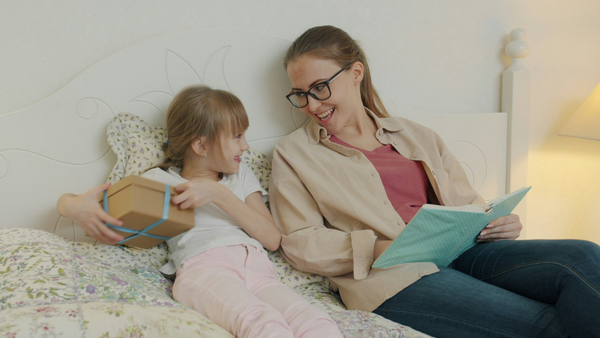By Tiffany “TJ” Joseph, Bened Life Neurodiversity and Disability Consultant
It’s “spooky season” and many people are now picking costumes and decorations out for their favorite Halloween and fall activities. However, Autistic people and those with sensory processing differences may experience unique struggles around Halloween. Having a heightened sensitivity to sensory stimuli can make this a difficult holiday.
Here are some accommodations – and some fun sensory activities – to make Halloween more accessible.
Sensory-friendly Halloween costumes
Costumes can pose a variety of issues when it comes to sensory problems.
Textures & fit: Many Halloween costumes are made of materials that can feel uncomfortable or itchy to people with sensory sensitivities. Many traditional costumes also come in limited size options that may be too tight or too loose for your child. Seams, tags, or tight-fitting outfits may trigger discomfort for some, while loose-fitting costumes may be a trigger for others.
Accessories: Some costumes require masks, gloves, or face paint, which may overwhelm an Autistic person’s sense of touch, or cause distress.
Here are some sensory-friendly Halloween costume ideas:
- Opt for costumes with soft fabrics
- Practice wearing costumes in the days and weeks before Halloween
- Create costumes from familiar, comfortable clothing you already have
- Avoid masks and face paint to reduce discomfort
Sensory concerns around lighting
Bright and flashing lights: Halloween displays often include strobe lights, flickering lanterns, or flashing decorations. Autistic people or those with sensory issues might find these overwhelming, triggering anxiety, meltdowns, or sensory overload.
Darkness: The low-light environment during trick-or-treating might also create anxiety for children who are sensitive to visual stimuli or have difficulties with spatial awareness and gross motor skills.
Suggestions for helping kids with issues with lights:
- If your loved one has trouble with bright or flashing lights: skip the houses or areas with those lights or warn the person so they can cover their eyes or cover their eyes for them.
- For low light issues: carry a flashlight and keep it trained on the ground where they walk or have a wearable light around their neck or shoes.
Sensory issues with sounds
Loud noises: The sounds of Halloween, like spooky music, screams, and sudden noises from songs and decorations, can be overwhelming for people with sensory sensitivities. Unexpected or loud sounds can startle them and increase feelings of discomfort. They may even scare them from liking the holiday in general.
Crowds and excitement: Large crowds or groups of trick-or-treaters can create a noisy and chaotic environment, which might be hard to navigate for those with sensory sensitivities.
Suggestions for sound sensitivities:
- Listen to some popular Halloween toys in the store or online (such as on YouTube) to hear what they sound like. Get used to or practice listening to the sounds.
- Don’t forget to try ear protection headphones
- Go to Halloween events at times when there are smaller crowds (earlier or later than others)
Candy and food
Tastes: Autistic kids and adults alike often have strong preferences for certain tastes and may avoid candy with intense or unfamiliar flavors, such as sour or overly sweet treats.
Textures: Sticky, chewy, or crunchy candies may be problematic. Some children may find these textures unpalatable or distressing, leading them to refuse candy or have adverse reactions.
Why not try alternative treats?
Some families choose to offer non-food treats like small toys or sensory-friendly items for trick-or-treaters, especially in homes that participate in the Teal Pumpkin Project (which promotes inclusive, allergy-friendly Halloween). However, let’s not get this confused with the Blue Pumpkin movement for autism, which is a way to let candy-givers know the child might be Autistic and can’t say trick or treat.
Helping your Autistic child have a great Halloween
Preparation
Preparing our loved ones in advance by explaining what to expect can help reduce anxiety. Visuals, age-appropriate social stories, watching YouTube videos about Halloween and Trick-or-Treating or role-playing can make the unfamiliar aspects of Halloween feel more predictable and less mysterious, and thus less anxiety-inducing.
Sensory breaks
Offering regular breaks in quiet, familiar spaces can help a child who is overwhelmed by the sensory demands of Halloween. So, if trick-or-treating, maybe a chase car can follow along in case you decide to end the evening early if your kids stop having fun.
Safe alternative activities and Halloween sensory ideas
Some families prefer to celebrate Halloween in a more controlled environment, like at home or in a quieter space, instead of trick-or-treating in a busy neighborhood. Here are some fun Halloween activities that aren't as scary/sensory-overloading:
Trunk or treat
If you have a child that runs or elopes, a Trunk or Treat event is a great way to celebrate, get treats, be safety-minded, and have a fun-filled time without the crowd. At a Trunk or Treat, cars with decorated trunks are arranged in a parking lot, typically in a circle during the daytime. Guests to the event visit each of the cars to get treats.
Trunk or Treat events are very helpful if you have a runner or wanderer because they usually provide a predictable environment. They’re also helpful if you have someone like my oldest, who used to run into every open door during trick-or-treating.
Trunk or treats mean no doors to open or steps to walk up and down while trying to manage a child. Also, they are done on many different days, not necessarily on Halloween, so there is less traffic and crowds in every way.
Check your local churches, Arcs, Easter Seals, elementary schools, and local Facebook groups for the Trunk or Treat nearest to you. If you don’t find one near you, maybe think about hosting a Trunk or Treat yourself.
Decoration tours and small parties
My family loves walking or driving around neighborhoods and admiring various decorations like people tend to do for Winter holidays.
We have also had Halloween parties for the kids in our family and friend groups. Kids and adults wear costumes, and we watch kid-friendly Halloween movies and eat Halloween-themed foods in a decorated home. We switched whose house we partied at every year.
Halloween sensory bins and Boo baskets
You can create Halloween-themed sensory bins. These are as fun to create for the adults as they are fun for the children to play with. Seasonal dried corn and pumpkin seeds make excellent Halloween sensory bin filler.
Jack-o-lanterns are also great ways to have sensory fun for some, if they like the ooey gooey innards of the pumpkin and clearing them out. Plus, kids can be creative with adult help and make some great designs.
Using safe tea lights instead of candles is a great way to get a nice sensory delight. Also, projects with vinegar and baking soda are fun to do inside Jack-o-lanterns.
Want to avoid carving and cleaning a pumpkin? A little bit of paint and/or a big pair of googly eyes provide a great way to a make a fun and festive pumpkin.
Boo Baskets are becoming more and more popular ways to celebrate the holiday without the sensory overload or fright. These are similar to Easter baskets. You fill Halloween pumpkins with little Halloween-themed trinkets, candies, or other little things that your loved one will like.
About the Author
Tiffany "TJ" Joseph is an Autistic adult working in accessible education with teen and young adult Autistic non-speakers. TJ is also the mother of three Neurodivergent children. She herself is Hard of Hearing and utilizes many ways to communicate including ASL, mouth words, and high-tech AAC (augmentative and alternative communication). Their passion in the disability space is communication and education rights for people of all disabilities. Find TJ on social media at Nigh Functioning Autism.
Recommended reading:
6 Kids’ Books We Recommend on Autism or Disability Representation
Nonspeaking Autism - My Point of View







